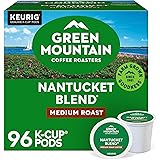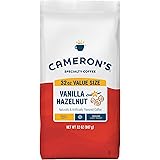Mastering Home Espresso: Essential Tips for the New Barista
Embarking on your home espresso journey is an exciting step. As highlighted in the video above, the initial stages can feel overwhelming. Many new baristas face common frustrations: wasted beans, inconsistent shots, and a seemingly endless pursuit of perfection. This guide expands on the vital principles shared by our Coffee Educator, Sam, offering deeper insights into achieving exceptional espresso right in your own kitchen.
Start Strong: The Unseen Power of Fresh Coffee Beans
Ignoring bean quality handicaps your efforts. Freshly roasted coffee is paramount. Think of it like baking: you wouldn’t use stale flour for a gourmet cake. The video emphasizes coffee 5-10 days off roast. This period is critical. Beans need time to “degas,” releasing carbon dioxide (CO2) from the roasting process. Too soon, and excessive CO2 hinders extraction. Too late, and the coffee loses its vibrant essence.
Older coffee off-gasses more. This means fewer solubles remain. Solubles are the flavor components we want to extract. Less ‘stuff’ in the coffee yields quicker, weaker shots. Your grinder then works overtime. You must grind finer and finer. This risks choking your grinder. It creates a muddy puck. You’ll deal with watery, spraying shots. Don’t compromise. Invest in quality, fresh beans. It’s the foundation for any great home espresso barista.
Guard Your Gold: Optimal Coffee Storage Strategies
Coffee is organic. It deteriorates like any fresh produce. Moisture, temperature, light, time, and oxygen are its enemies. Oxygen is the primary culprit. It accelerates staling. Imagine a cut apple browning quickly; oxygen does the same to coffee’s delicate compounds.
Store your beans correctly. Use an opaque, airtight container. Vacuum-sealed options are superior. If using the original bag, ensure it has a one-way valve. Squeeze out all air. This simple act adds weeks to your coffee’s life. Proper storage preserves its complex aromas and flavors. It maintains the volatile compounds. It’s an easy win for any new barista.
The Grinder is King: Why Precision Matters for Home Espresso
A great grinder is non-negotiable. It’s the engine of your espresso setup. The video rightly stresses its daily importance. Coffee is a dynamic product. It changes with humidity, temperature, and age. Your grind size must adapt. Skipping this step guarantees inconsistency. You wouldn’t expect a finely tuned engine to perform well with poor quality fuel. Similarly, a subpar grinder undermines even the best beans.
Not all grinders are equal. Espresso demands fine, uniform particles. Stepped adjustments on some grinders are too broad. They prevent precise dialing in. Look for stepless adjustment. Or, very fine micro-steps. This allows minute changes. It lets you chase that perfect extraction. It’s a key tool for any serious home espresso barista.
The Scale’s Secret: Unlocking Consistency in Every Shot
Espresso is a recipe. Baking without measuring cups is futile. The same applies to espresso. Using a scale for dose and yield is critical. It provides objective data. Without it, you’re guessing. You risk varying shot times. Your extraction will suffer. Crema, for example, weighs less than espresso. Visual cues are misleading. A 2-ounce shot by volume can vary wildly in actual mass.
A gram scale eliminates guesswork. It standardizes your input. It measures coffee going in (dose). It measures liquid coming out (yield). This consistency allows informed adjustments. You can replicate stellar shots. You can troubleshoot poor ones. It’s the scientist’s tool for any new barista.
Follow the Blueprint: The Espresso Recipe Unpacked
Every great dish needs a recipe. Espresso is no different. The 1:2 ratio is a foundational recipe. One part ground coffee to two parts espresso. This means if you dose 18 grams of coffee, aim for 36 grams of espresso. Target a brew time between 25-30 seconds. This is your target zone. It represents optimal extraction. Shots outside this range may be underextracted (sour) or overextracted (bitter).
Your scale and grinder work together here. Adjust grind size to hit the time target. Finer grind slows the shot. Coarser grind speeds it up. This iterative process is “dialing in.” It’s a continuous calibration. It ensures delicious, repeatable results. It’s a core skill for the home espresso barista.
Puck Prep Prowess: Simplicity for Stellar Results
Puck prep is easily overcomplicated. New baristas can spend fortunes on tools. Simplicity is truly best. Your goal is even distribution. This avoids channeling. Water finds paths of least resistance. Channeling leads to uneven extraction. This means some coffee is over-extracted, some under-extracted. The result? A compromised shot.
Distribute the grounds well. Wiggle the portafilter as coffee dispenses. Tap it gently to settle the grounds. Tamping then compresses the puck. Apply gentle, consistent pressure. The amount of pressure is less important. Keep it level. Make it repeatable. A level, consistent tamp prevents micro-channels. It’s a foundational skill for the home espresso barista.
The Purge Principle: Clearing the Way for Perfect Shots
Grind retention is a silent killer of consistency. Many grinders retain old grounds. This can be up to 2-3 grams. These grounds from previous settings contaminate your new dose. They might be coarser or finer. This disrupts your carefully dialed-in recipe. It’s like leaving old ingredients in your mixer. The new batch gets compromised.
Purging your grinder is essential. Do it before your first shot. Purge after any grind adjustment. Purge when switching coffee bags. Even with the same roast date. A quick purge flushes old grounds. It ensures only fresh, correctly-sized particles enter your portafilter. This simple habit elevates your consistency dramatically. It’s a habit every new barista should adopt.







